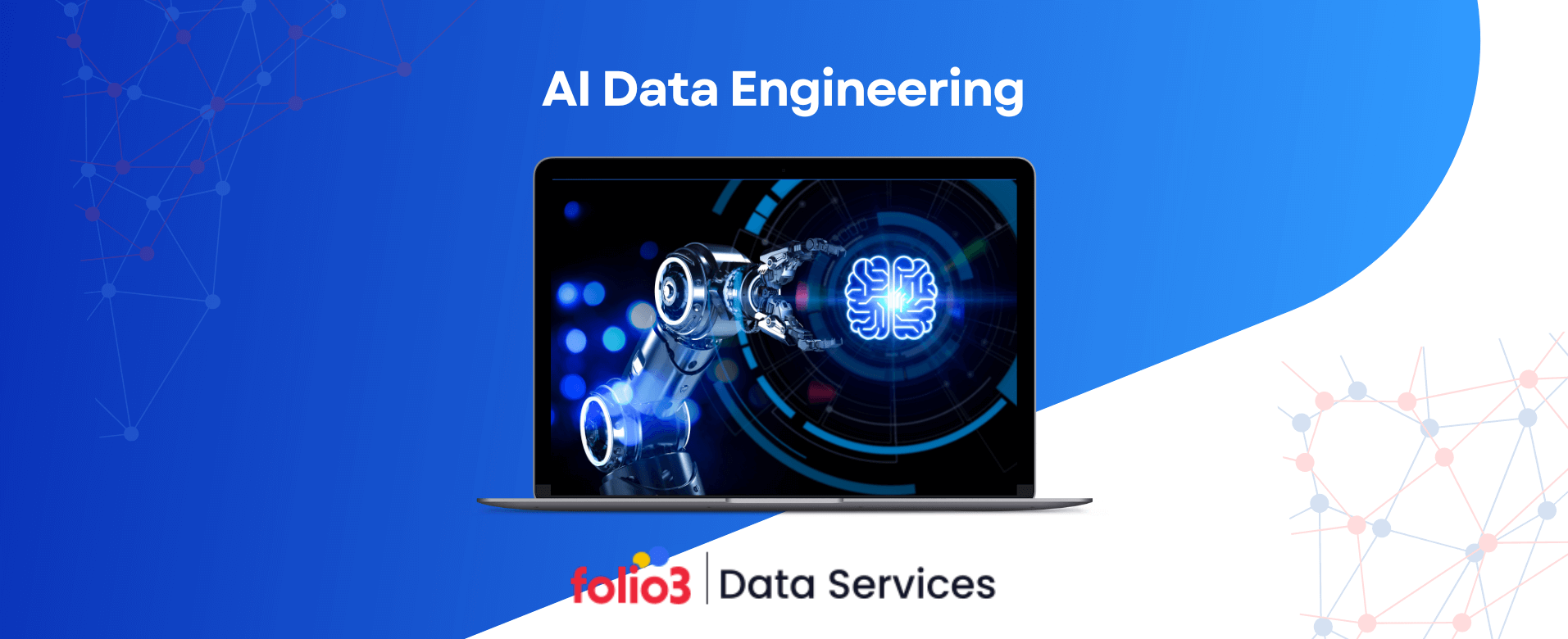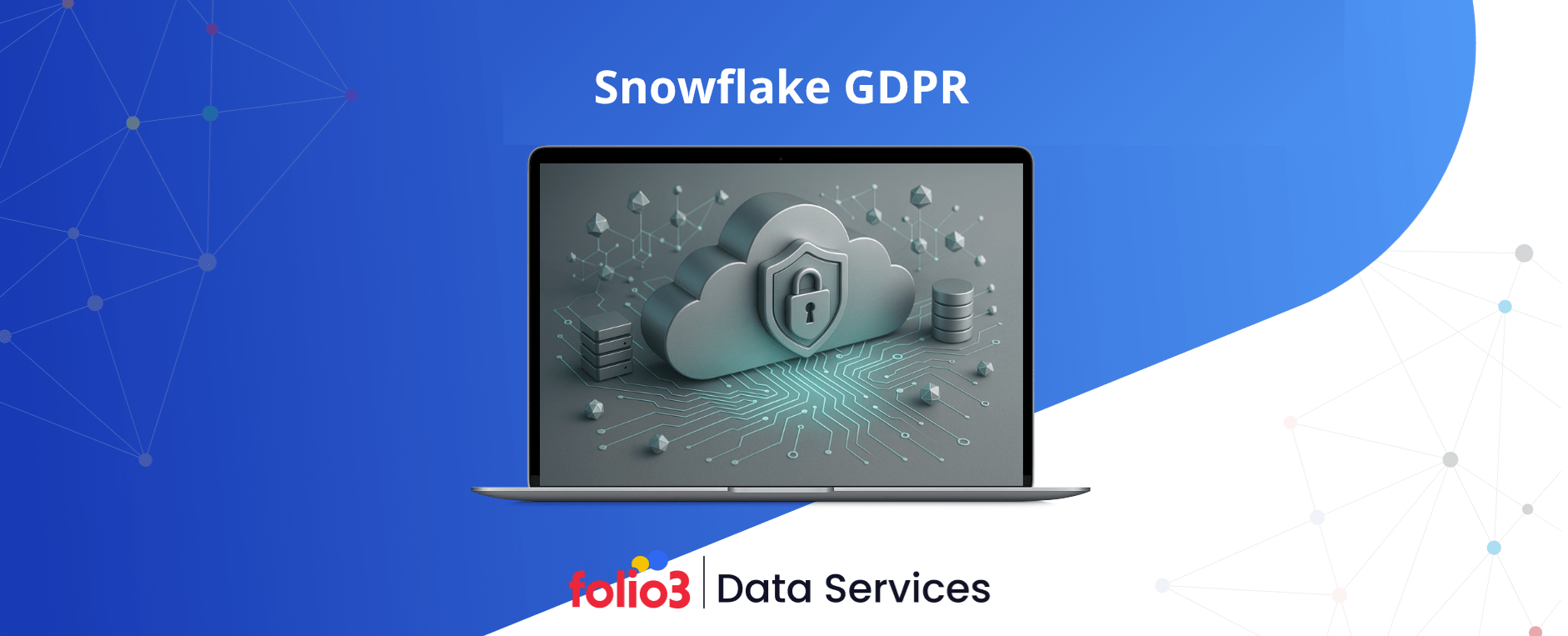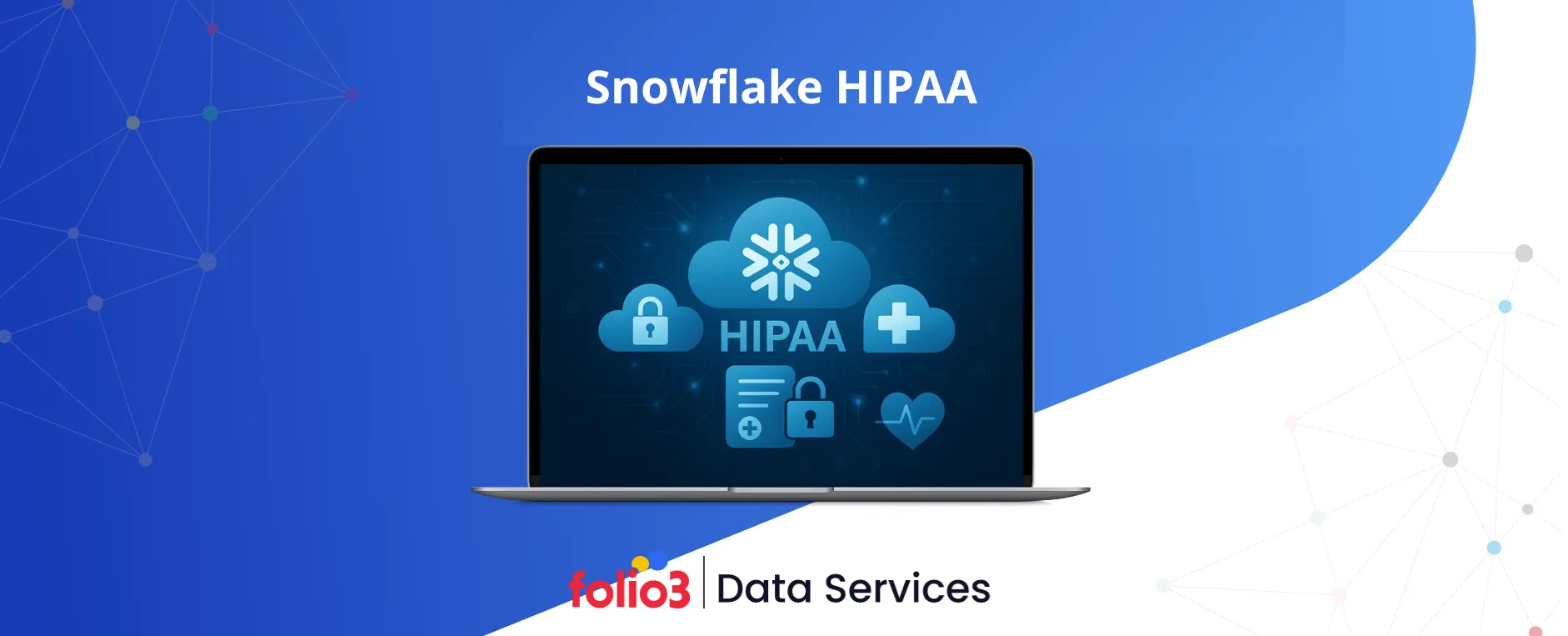In the modern data-driven economy, organizations constantly seek more efficient ways to collect, process, and derive value from massive volumes of information. Data engineering is at the heart of this transformation, a critical discipline focused on building the architecture, pipelines, and infrastructure supporting data collection, storage, and processing.
As data grows in complexity and volume, so does the demand for more intelligent, automated solutions. This is where AI in data engineering becomes increasingly relevant. The rise of Artificial Intelligence (AI) is redefining how data systems are designed and operated. By integrating AI capabilities into data engineering workflows, teams accelerate data processing and infuse decision-making with greater context and predictive accuracy.
According to IDC, global data creation is expected to reach 175 zettabytes by 2025, emphasizing the urgent need for scalable, intelligent systems to handle such vast amounts of information. More than just a buzzword, AI in data engineering introduces automation to repetitive and error-prone tasks like data cleansing, transformation, and pipeline monitoring.
This synergy allows engineers to focus on strategic development while AI manages dynamic workloads, anomaly detection, and schema optimization. In this blog, we’ll explore how AI is applied in data engineering, its key benefits, and the leading tools driving this shift.
What is AI in Data Engineering?
AI in data engineering refers to using artificial intelligence technologies, such as machine learning and automated analytics, within data engineering workflows to improve accuracy, speed, and adaptability. AI in data engineering brings intelligence and adaptability into the data infrastructure, transforming static systems into innovative, self-optimizing platforms capable of handling today’s complex data needs.
Moving Beyond Manual Workflows
Traditionally, data engineers have manually managed tasks like data ingestion, transformation, and validation. As data volumes surge, this hands-on approach becomes inefficient. AI supports these efforts by automating repetitive processes, identifying schema changes, and managing data quality with minimal intervention.
Intelligence Built Into Pipelines
What makes AI valuable in this context is its learning capability. AI systems can analyze historical pipeline behavior to detect anomalies, predict failures, and suggest performance improvements, all in real time. Engineers no longer need to anticipate every issue or hard-code every transformation rule.
Human-AI Collaboration
AI doesn’t eliminate the role of data engineers, but it improves it. With routine tasks automated, engineers can focus on building scalable architectures, enforcing security standards, and collaborating with analytics teams. By leveraging data architecture services, organizations can ensure their AI initiatives are built on robust, flexible, and well-governed data foundations.
Key Applications of AI in Data Engineering
As data ecosystems scale, AI is vitally streamlining core engineering tasks. From ingestion to monitoring, its applications touch every data lifecycle stage.
Data Ingestion & Integration Automation
AI simplifies data extraction from multiple sources, including databases, APIs, or real-time streams. Instead of writing custom connectors for each source, AI-powered tools can detect source patterns, map fields, and configure ingestion workflows automatically. This reduces manual setup time and minimizes integration errors.
For example, pet care data integration solutions rely on AI to unify data from veterinary systems, smart collars, health trackers, and customer apps. By automating ingestion and integration, these businesses gain a complete and accurate view of pet health and customer engagement.
Data Quality & Cleansing
Poor data quality can lead to flawed analytics and business decisions. AI systems identify missing values, outliers, duplicates, and inconsistencies across datasets. More importantly, they learn from past cleansing actions to apply similar logic in future scenarios, helping maintain data accuracy and reliability at scale.
Data Transformation & Enrichment
Transforming raw data into usable formats is often time-consuming. AI speeds this up by recommending transformation rules based on schema, usage, and historical data flows. It can also enrich datasets by cross-referencing external sources, adding value for analytics and reporting.
Metadata Management and Data Lineage
Tracking where data comes from, how it changes, and where it moves is crucial for compliance and transparency. AI can automatically extract metadata, detect lineage gaps, and update data catalogs, ensuring engineers and analysts have complete visibility into their systems.
Intelligent Workflow Orchestration
Instead of static scheduling, AI adapts orchestration based on system performance and data readiness. For example, if upstream data is delayed, AI can re-prioritize dependent tasks without manual intervention, maintaining operational continuity.
AI-Powered Observability
Monitoring modern data pipelines is complex. AI provides observability by detecting anomalies, tracking latency trends, and predicting failures before they disrupt operations. This proactive monitoring allows teams to resolve issues faster and consistently maintain system health.
Benefits of Integrating AI into Data Engineering
Integrating AI into data engineering offers measurable benefits across technical workflows and business outcomes. As data systems become more complex and demanding, AI provides a more innovative way to manage and scale infrastructure.
Reduced Manual Effort and Cost
One of the most immediate advantages is a reduction in manual workload. Traditionally, data engineers spend hours writing scripts, fixing broken pipelines, and manually checking data accuracy. Many of these repetitive tasks such as anomaly detection, schema mapping, and transformation rule generation can be automated with AI. This doesn’t just save time; it also cuts operational costs. A 2023 study by Gartner noted that companies using AI in their data stack reduced engineering labor costs by up to 25% through automation.
Faster Data Pipeline Development
Building and deploying data pipelines can take weeks, especially when integrating multiple data sources. With the help of modern data pipeline services, powered by AI, organizations can speed up this process by identifying optimal data routes, eliminating redundancies, and generating reusable pipeline components. This allows teams to move from prototype to production much faster, leading to quicker insights and faster project turnarounds.
Improved Data Quality and Governance
Poor-quality data can derail analytics, machine learning, and business reporting. AI data extraction solutions help maintain high standards by automatically flagging inconsistencies, missing values, and duplicate records. Moreover, AI-driven governance tools can track how data moves through systems, log every transformation, and ensure compliance with privacy regulations. This leads to cleaner datasets and more trustworthy insights across the organization.
Enhanced Scalability and Reliability
Data loads aren’t always predictable, especially with real-time or event-driven architectures. AI adapts to shifting data volumes and system behavior, optimizing real-time performance. For instance, it can dynamically allocate resources or reroute jobs when bottlenecks occur, improving system uptime and ensuring that pipelines remain responsive even during traffic spikes.
Real-Time Decision-Making Enablement
With traditional data engineering, there’s often a delay between data collection and action. AI bridges that gap. By automating validation, enrichment, and analysis steps, AI allows organizations to make decisions based on fresh data. Whether alerting a supply chain team about inventory changes or updating pricing based on real-time market trends, AI makes near-instant responses possible.
AI Tools and Technologies in Data Engineering
As artificial intelligence becomes more embedded in data workflows, several powerful tools and platforms have emerged to support its adoption in data engineering. From open-source frameworks to fully managed cloud-native solutions, these technologies redefine how teams build, scale, and govern data systems.
Open-Source Tools
Open-source projects have played a foundational role in bringing AI into data engineering. They offer flexibility, strong community support, and extensibility, making them popular for organizations building custom workflows.
1. Apache Spark + MLlib
Apache Spark remains a cornerstone for large-scale data processing, supporting advanced data integration techniques. Its machine learning library, MLlib, allows data engineers to integrate ML models directly into their ETL pipelines. For example, it’s possible to train a model to flag anomalies or score incoming records during ingestion, without moving data out of Spark’s environment. This tight integration makes it ideal for scalable AI pipelines across structured and unstructured datasets.
2. Airflow + AI Plugins
Apache Airflow is widely used for workflow orchestration. With AI-focused plugins and integrations, Airflow can trigger ML models, monitor real-time data quality, and make pipeline scheduling decisions based on learned behavior patterns. It adds intelligence to workflows that were previously static and time-triggered.
Cloud-Native Platforms
Cloud providers offer pre-integrated AI and data engineering tools, allowing businesses to scale efficiently without managing infrastructure. These platforms reduce the barrier to entry for applying AI across the data lifecycle.
1. Azure – Data Factory + Synapse + Cognitive Services
Azure Data Factory offers scalable data integration, while Synapse Analytics provides powerful warehousing, big data and predictive analytics capabilities. Integrating Azure Cognitive Services allows AI capabilities like language understanding or image recognition to be embedded directly in data flows. For instance, engineers can analyze call transcripts or social media posts during ingestion and enrich datasets with real-time sentiment tags.
2. AWS – Glue + SageMaker + Lookout for Metrics
Amazon’s Glue automates ETL tasks, and SageMaker enables scalable model training and deployment. With Lookout for Metrics, engineers can detect anomalies in KPIs without writing custom detection logic. This is especially useful for operational metrics where early warnings are crucial, such as detecting a drop in data arrival rate or processing throughput.
3. GCP – Dataflow + Vertex AI + BigQuery ML
Google Cloud offers a powerful stack for AI-driven data engineering. Dataflow manages real-time stream and batch processing, while Vertex AI allows model development and deployment. BigQuery ML lets engineers train ML models directly in their SQL environment, which is ideal for teams that want to keep modeling close to their data.
AI-Enhanced Metadata Tools
Good metadata management is critical for data governance and transparency. AI-enhanced metadata tools automate cataloging, detect relationships, and maintain lineage without relying on manual documentation. These tools ensure that visibility and control don’t get lost as pipelines grow, helping teams meet compliance standards while still moving fast.
- Alation uses machine learning to suggest data definitions, track usage patterns, and recommend datasets to users.
- Collibra adds automation to governance, flagging anomalies in data quality or usage.
- Amundsen, developed by Lyft, auto-populates data catalogs and uses graph-based AI to trace lineage across sources.
Practical Applications of AI-Driven Data Engineering – Real Use Cases
Modern data engineering solutions, especially those enhanced with AI and machine learning, reshape how businesses anticipate problems, optimize operations, and innovate across sectors. Here are some practical, high-impact applications where AI-powered data engineering has made a tangible difference.
Melonfrost, a biotechnology company, partnered with Folio3 to build a scalable data platform to handle high-throughput IoT sensor data from lab equipment. The solution significantly reduced equipment failures and improved operational efficiency by enabling real-time processing and predictive analytics.
With features like anomaly detection, alerting systems, and interactive dashboards, Melonfrost now detects early signs of equipment wear, allowing teams to take proactive action, keeping lab operations smooth and uninterrupted.
Let’s Build Scalable Data Pipelines—Powering Smarter Decisions.
AI-Optimized ETL for Retail Transaction Data
AI significantly improves ETL processes, especially in retail, where enormous amounts of transaction data are generated daily. For example, Walmart has leveraged AI-enhanced ETL pipelines to manage and process point-of-sale data from thousands of stores worldwide. By automating anomaly detection, enriching customer data, and adapting dynamically to changing data formats, Walmart’s system reduces manual workload and accelerates data availability.
This enables faster inventory updates, real-time sales analytics, and personalized marketing campaigns, helping Walmart respond quickly to market trends and customer needs. Such AI-driven ETL advancements illustrate how retailers can turn raw transaction data into actionable insights with greater speed and accuracy.
ML-Powered Data Cataloging in Healthcare
Healthcare organizations face a constant challenge in managing scattered and sensitive patient data. To address this, Mount Sinai Health System has implemented machine learning–based data cataloging tools to automate metadata tagging, classify patient information, and maintain data lineage across systems. By combining these tools with AI enterprise search solutions, clinicians and researchers can instantly locate critical records or datasets across multiple platforms, improving efficiency and collaboration.
Using ML, Mount Sinai can automatically discover datasets from electronic health records (EHRs), medical imaging, lab results, and insurance platforms. This enables faster data discovery for clinicians and researchers while ensuring compliance with HIPAA and other healthcare regulations. ML-powered cataloging improves interoperability, reduces manual documentation, and supports life-saving insights from unified patient data.
Intelligent Data Integration for Financial Reporting
In the finance sector, real-time and accurate reporting is critical. Goldman Sachs has adopted intelligent data integration tools to streamline financial data from multiple internal systems, market feeds, and regulatory sources. With the support of data integration consulting services, these tools are tailored to meet complex compliance needs and operational workflows. AI algorithms help detect inconsistencies, reconcile entries across ledgers, and prioritize relevant data streams for reporting.
This AI-driven integration minimizes manual adjustments and ensures that financial analysts and auditors have timely, trustworthy information. As a result, Goldman Sachs improves transparency, reduces risk, and accelerates quarterly and annual reporting cycles demonstrating how intelligent integration is redefining financial data operations at scale.
Conclusion
AI in data engineering is no longer a futuristic concept but it’s a present-day necessity for organizations seeking to scale intelligently, improve data quality, and enable real-time decision-making. From automating ETL pipelines to enhancing metadata management, AI empowers teams to move faster, reduce costs, and deliver greater business value.
If you’re ready to modernize your data infrastructure and unlock the full potential of AI, Folio3’s Data Services can help. With deep expertise in AI-driven architecture, cloud platforms, and custom data solutions, Folio3 enables businesses to build smarter, more scalable data ecosystems.
Partner with Folio3 to future-proof your data strategy now!





